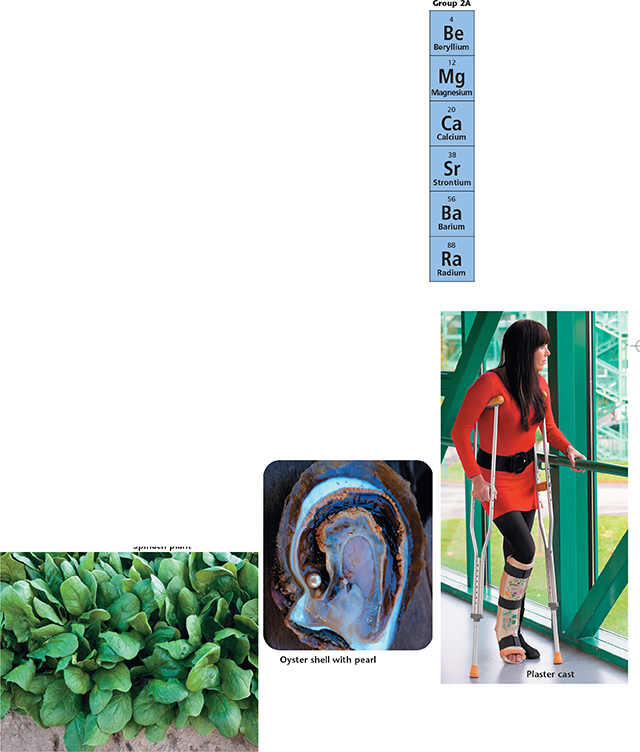The Alkaline Earth Metals
The elements in Group 2A are called alkaline earth metals. All alkaline earth metals have two valence electrons. Metals in Group 2A are harder than metals in Group 1A. The melting point of magnesium is 650°C, which is much higher than the melting point of sodium—98°C.
 Differences in reactivity among the alkaline earth metals are shown by the ways they react with water. Calcium, strontium, and barium react easily with cold water. Magnesium will react with hot water, but no change appears to occur when beryllium is added to water. Magnesium and calcium have essential biological functions and they provide materials used in construction and transportation.
Differences in reactivity among the alkaline earth metals are shown by the ways they react with water. Calcium, strontium, and barium react easily with cold water. Magnesium will react with hot water, but no change appears to occur when beryllium is added to water. Magnesium and calcium have essential biological functions and they provide materials used in construction and transportation.
Magnesium
Magnesium plays a key role in the process that uses sunlight to produce sugar in plants like the one in Figure 16. The compound at the center of this process is chlorophyll (KLAWR uh fil), and at the center of chlorophyll is magnesium. A mixture of magnesium and other metals can be as strong as steel, but much lighter. Reducing overall mass without sacrificing strength is an important consideration in transportation. The frames of bicycles and backpacks often contain magnesium.
Calcium
Your body needs calcium to keep your bones and teeth strong. Calcium carbonate—a compound of calcium, carbon, and oxygen—is the main ingredient in chalk, limestone, coral, and the pearl in Figure 16. Your toothpaste may contain the compound calcium carbonate because this hard substance can polish your teeth. The plaster cast in Figure 16 contains calcium sulfate, which is a compound of calcium, sulfur, and oxygen.
Figure 16 Chlorophyll molecules in spinach contain magnesium. An oyster shell and a pearl are both made from calcium carbonate. A plaster cast contains the compound calcium sulfate.
 d
d



